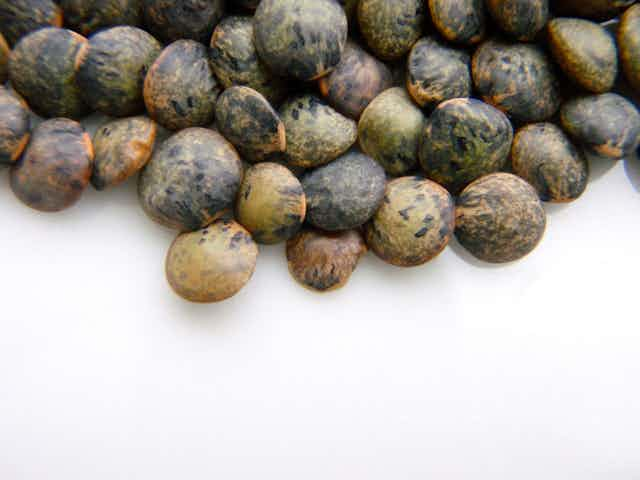Australia has some of the world’s most ancient soils, many of which grow delicious produce. In this series, “The good earth”, soil scientist Robert Edis profiles iconic soils and the flavours they bring.
Puy Lentils are little edible emeralds; their growers call them the “caviar of vegetables”. In 1996 they became the first vegetable recognised as an “appellation d'origine contrôlée” (AOC) by France. In 2009 they obtained European PDO (Protected Designation of Origin). They are - without question - the most delicious variety of lentils.

In places where pulses are taken seriously I have spent many happy hours listening to debates about where the best lentils are grown and why; is it southern Europe (Spain v France), west Asia, the Middle East? Notwithstanding full respect and homage to the artisan cultivators of Le Puy, one cannot ignore the Wimmera, where the self-mulching Grey Vertosol soil steps up to the plate to produce Australia’s version of these premium green lentils.
Green lentils have only been grown for a few decades in Australia (compared to about 10,000 years in Mesopotamia). But production has taken off, particularly around Horsham, Victoria.
Like all legumes, lentils provide their own nitrogen and even leave some in the soil, thanks to symbiotic nitrogen fixation. Bacteria live in nodules of the roots of legumes. These bacteria are able to take nitrogen from the air and convert it into a form usable by both the bacteria and the plant. This reduces the amount of fertiliser needed, for both for the lentils, and for wheat or canola planted afterwards. That in turn reduces greenhouse gas emissions from nitrogen-based fertilisers.
Lentils also provide a “disease break” between wheat or canola crops by being incompatible to the same pathogens, allowing stubble of these crops to be retained to rot slowly, further aiding soil health. Oh, and just coincidentally, they can be pretty profitable.

But green lentils can also be fussy. Self-mulching Grey Vertosol - incidently Queensland’s state soil is a Vertosol - has allowed green lentil production to take off in the Wimerra of Victoria due to a few properties. It has a high clay content, and this provides controlled release of water over the longer season of green lentils need (compared to red lentils).
These are quite fertile soils, particularly in the topsoil, which leads to adequate supply of nutrients. Potassium and zinc are particularly important for green lentils. The soil pH is near neutral, which is favoured by the plant and essential for good quality texture, colour and flavour of grains. This pH is also needed so the bacteria in the roots that fix nitrogen can flourish.
These soils are also self-mulching, meaning that a granular layer is formed at the surface through wetting and drying. Self-mulching soils have well structured topsoils, providing an excellent environment for roots. Green lentil plants are much shorter than wheat and canola, and the pods grow throughout the plant including close to the ground. The soil surface of this Vertosol is flat enough to allow mechanical harvesting of the pods.
So for a nutritious food rich in protein, based on a real partnership between plant and soil: go green.


